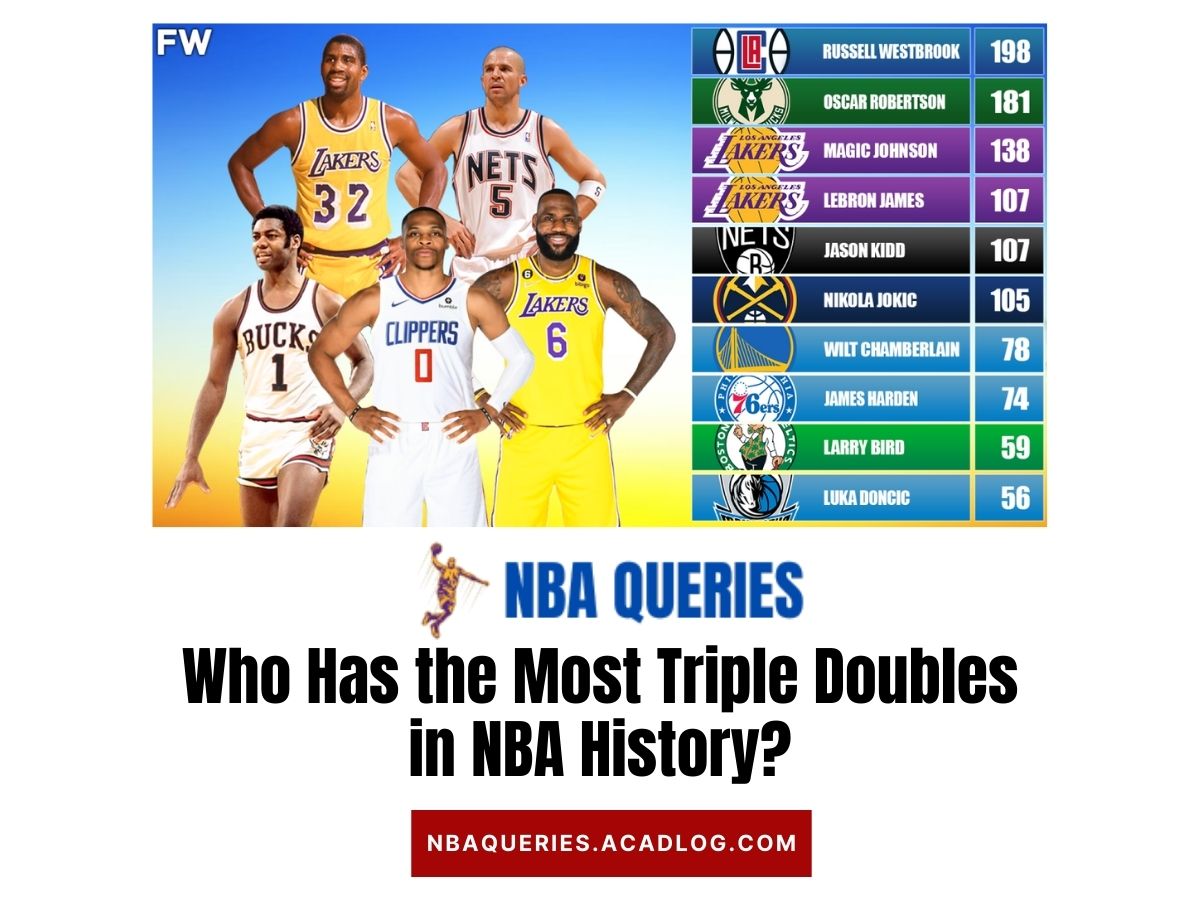In the fast-paced world of professional basketball, where athleticism and strategy collide, few accomplishments stand out as much as the elusive triple-double. A triple-double occurs when a player records double-digit figures in three statistical categories during a single game. These categories typically include points scored, rebounds, and assists. The NBA did not officially track triple-doubles until the 1979-80 season, but since then, several players have etched their names into the record books.
Russell Westbrook: The Triple-Double Machine
At the forefront of this statistical phenomenon stands Russell Westbrook, a force of nature on the court. Westbrook’s relentless energy and versatility have propelled him to the top of the triple-double mountain. Let’s delve into the numbers:
- 198 Triple-Doubles: Westbrook’s remarkable count of 198 triple-doubles is nothing short of awe-inspiring. He has consistently stuffed the stat sheet, leaving opponents and fans alike in disbelief. His relentless pursuit of excellence has rewritten the record books.
- Surpassing Oscar Robertson: Before Westbrook’s reign, the legendary Oscar Robertson held the long-standing record with 181 triple-doubles. Robertson’s feat was achieved during an era when the game was different, but his impact remains timeless. Westbrook’s relentless drive allowed him to surpass Robertson, cementing his legacy.
- Seasonal Dominance: Westbrook’s 38 triple-doubles during the 2020-21 NBA season were particularly eye-catching. His ability to impact games across multiple facets—scoring, rebounding, and playmaking—set him apart. Whether he was donning the jersey of the Washington Wizards, Houston Rockets, or Oklahoma City Thunder, Westbrook consistently left his mark.
- Historical Context: To appreciate Westbrook’s achievement fully, we must recognize the rarity of triple-doubles. They require a delicate balance of skills, court vision, and sheer effort. Few players have consistently achieved this feat, making Westbrook’s record even more remarkable.
The Magic of Triple-Doubles
Triple-doubles are more than just numbers; they represent a player’s ability to impact every aspect of the game. Let’s break down the components:
- Points: Scoring is a fundamental part of basketball. Whether it’s a dazzling dunk, a clutch three-pointer, or a well-executed layup, points drive the game. Westbrook’s scoring ability, combined with his relentless drives to the basket, contributes significantly to his triple-doubles.
- Rebounds: Securing rebounds—both offensive and defensive—requires positioning, timing, and determination. Westbrook’s tenacity on the boards allows him to snatch missed shots and ignite fast breaks. His rebounding prowess complements his scoring and playmaking.
- Assists: The mark of a true floor general lies in their ability to create opportunities for teammates. Westbrook’s court vision and unselfishness shine through his assists. Whether threading the needle for a no-look pass or orchestrating pick-and-roll plays, he elevates his team’s performance.
The Pioneers: Oscar Robertson and Magic Johnson
Before the NBA officially tracked triple-doubles, two players set the stage for what was to come:
- Oscar Robertson: Often referred to as the “Big O,” Robertson was a trailblazer. His playing days spanned the late 1950s and 1960s, an era when the game was fundamentally different. Despite this, Robertson consistently filled the stat sheet. His combination of scoring, rebounding, and playmaking set the standard for future generations. His 181 triple-doubles stood as an unassailable record until Westbrook’s arrival.
- Magic Johnson: The charismatic point guard of the Showtime Lakers, Magic Johnson epitomized flair and finesse. His court vision and passing ability were unparalleled. Johnson’s 138 triple-doubles showcased his impact on both ends of the floor. His rivalry with Larry Bird and their epic battles in the 1980s elevated the NBA’s popularity.
The Evolution of the Game
As the NBA evolved, so did the concept of triple-doubles. Here’s how:
- Positionless Basketball: Traditional positions—point guard, shooting guard, small forward, power forward, and center—became fluid. Versatility became prized. Players like LeBron James, Luka Dončić, and Nikola Jokić blurred positional boundaries, contributing across the board.
- Statistical Awareness: The advent of advanced analytics and increased statistical tracking allowed fans and analysts to appreciate triple-doubles more deeply. We now dissect not only points, rebounds, and assists but also steals, blocks, and efficiency metrics.
- Russell Westbrook’s Era: Westbrook’s relentless pursuit of triple-doubles brought the spotlight back to this rare feat. His athleticism, motor, and sheer determination made him a triple-double machine. Whether in transition, crashing the boards, or threading passes, Westbrook’s impact was undeniable.
The Impact Beyond Numbers
Triple-doubles transcend statistics. They signify a player’s ability to influence every facet of the game:
- Leadership: A player who records a triple-double often leads by example. Their teammates feed off their energy, knowing that they contribute in multiple ways. Westbrook’s fiery competitiveness exemplifies this leadership.
- Entertainment: Fans love witnessing triple-doubles. The anticipation builds as a player approaches the milestone. The collective gasp when a rebound or assist completes the trifecta adds drama to the game.
- Historical Context: When Westbrook surpassed Robertson’s record, it wasn’t just about numbers. It was a passing of the torch—an acknowledgment of greatness across eras. Robertson himself celebrated Westbrook’s achievement, recognizing the evolution of the game.

